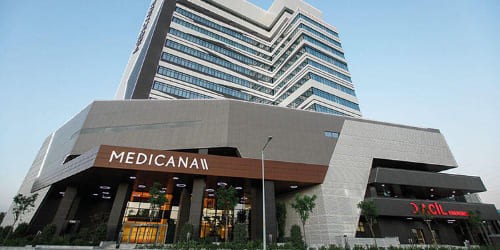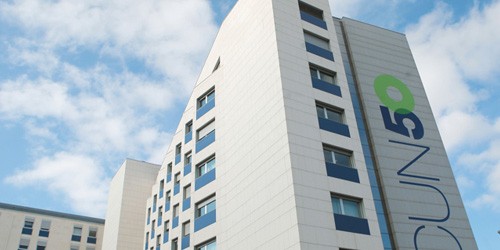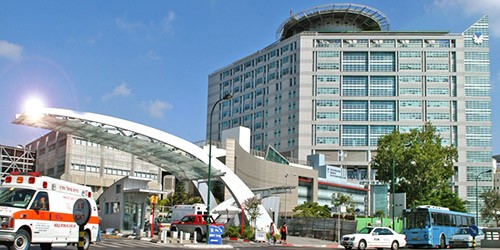1. Myelodysplastic syndrome |
2. Diagnostics |
3. Methods of treatment |
4. The prognosis for the disease |
5. Leading clinics |
Myelodysplastic syndrome (MDS) is also known as myelodysplasia. It is a group of haematological diseases characterised by an abnormality in the maturation of blood cells. The pathology is divided into different types. Some are slow and relatively mild while others can be very disruptive and can develop into leukaemia. It all depends on which cells (lymphocytes, red blood cells and/or platelets) are affected and how badly. Read more about MDS and how it is diagnosed and treated in our article.
Reading time:
What is myelodysplastic syndrome?
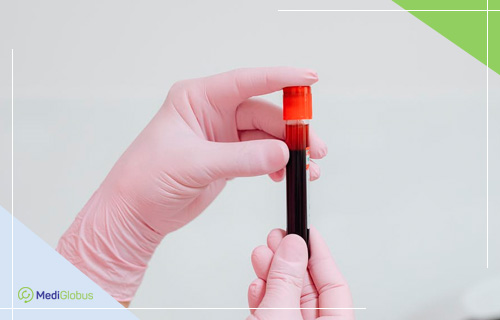
Myelodysplastic syndrome is most common in older people. The onset of the disease mostly occurs after the age of 70. It can also affect children or young people, but this is very rare.
In Europe, there are 40 cases of myelodysplastic syndrome per one million people aged 50-60 years, and more than 150 cases in people over 70 years.
MDS is a bone marrow disorder which affects the production of one or more types of blood cells. This means that white blood cells, red blood cells and/or platelets are produced in deficit. They are altered and do not function well. As a result, patients only partially retain the ability to produce healthy (mature) blood cells.
The exact causes of the disease are unknown. Chemical or radiation therapy as well as hereditary predisposition to haematological diseases can increase the likelihood of developing the disease. People who smoke or come into regular contact with certain chemicals such as petrol, pesticides, etc. are also at increased risk of MDS.
To learn more about myelodysplastic syndrome, its course and treatment prognosis, contact MediGlobus. If necessary, we will arrange an offline or online consultation with a competent doctor.
What are the symptoms of myelodysplastic syndrome?
In its early stages, the disease may be asymptomatic. As MDS progresses, immature blood cells that do not function properly gradually “take over” the bone marrow. They crowd out healthy cells and prevent them from entering the bloodstream. This causes several common signs:
increased fatigue and weakness,
pale skin,
difficulty breathing and shortness of breath,
unusual bruising of the skin,
increased susceptibility to infection,
chest pain;
chills and increased body temperature.
The symptomatology of the disease varies depending on which blood cells are affected. If patients have a decreased white blood cell count, they will develop leukopenia. This is fraught with a decrease in the body’s immune defences. Such patients are under increased risk of frequent infections, fever and weakness.
If the platelet count decreases, a haemorrhagic syndrome develops. It is characterised by: petechial haemorrhages under the skin, increased nasal, uterine, gastrointestinal bleeding and large bruises on the body.
The anaemic syndrome occurs when the level of red blood cells in the blood decreases. It is manifested by pallor, dizziness, shortness of breath and tinnitus. Patients also complain about persistent weakness, palpitations with minor physical exertion and increased irritability.
The clinical picture can develop either slowly or rapidly. In 30% of patients, the pathology can develop into acute myeloid leukaemia (AML). The disease is not divided into stages and requires immediate intervention. Abnormal blood cells travel quickly to different organs and can seriously damage the whole body in a matter of weeks.
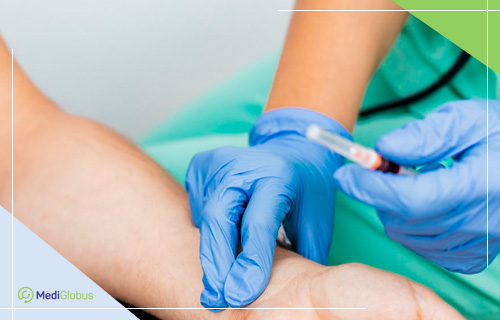
Diagnosis of myelodysplastic syndrome
Myelodysplastic syndrome is usually diagnosed with a general test and a peripheral blood smear. The pathology is characterised by abnormalities in one or more of the indicators. Patients with MDS most often have a significant decrease in the number of red blood cells. Some may also have a lack of white blood cells and platelets. Patients with certain types of myelodysplasia may have myeloblasts in the blood. This is a pathological condition that is a sign of a serious bone marrow problem.
To confirm the diagnosis, the patient undergoes a trepan biopsy and a bone marrow puncture. This involves taking a bone marrow aspirate and a small bone fragment. The biomaterial is sent to a laboratory for histological and cytological examination.
Additional diagnostic methods can also be performed to rule out other pathologies that cause similar symptoms. These include a chest CT scan, MRI of the brain, and ultrasound of the thyroid gland or abdomen.
For diagnosis of MDS abroad, leave your application on our website. Click the button below, fill in the feedback form and wait for a call from a MediGlobus coordinator. We will help you in choosing the best clinic for your check-up.
Treatment for myelodysplastic syndrome abroad
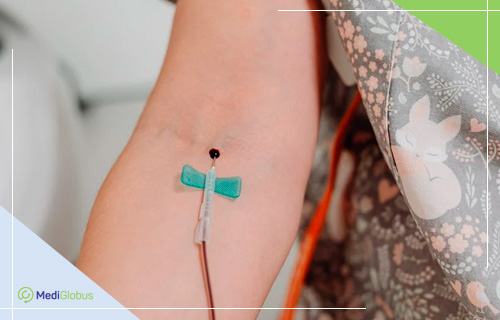
The clinical guidelines for myelodysplastic syndrome depend on the type of disease, its aggressiveness and the presence of comorbidities in the patient. Treatment of the pathology includes supportive and drug therapy as well as bone marrow transplantation (BMT).
The latter method is the only option that offers a potential cure for MDS. Transplantation is usually preceded by a course of high-dose chemotherapy. This is necessary to destroy all abnormal blood cells.
BMT resembles a blood transfusion procedure. It is given to about 10% of all myelodysplastic syndrome patients. Candidates for transplantation are people under 65 years of age who are in good health and do not have any concomitant serious diseases. Donors can be relatives (especially siblings) or unrelated individuals who fit the genotype as closely as possible.
Supportive therapy is indicated to alleviate the symptoms caused by the disease or its treatment. It involves blood transfusions as well as the use of drugs that increase the number of mature red blood cells produced by the body. Some patients are given medicines to reduce the level of iron in the blood, which can build up after a large number of transfusions. Antibiotic therapy is recommended to combat frequent infections.
Drug therapy can improve blood counts. It includes the use of medicines such as:
Lenalidomide – reduces the need for red blood cell transfusions.
Immunosuppressants – are used to weaken the immune system and improve blood counts.
Azacitidine and Decitabine – are used to treat myelodysplastic syndromes by killing rapidly dividing cells. It can slow the progression of myelodysplastic syndrome into acute myeloid leukaemia.
Myelodysplastic syndrome, which involves a high number of blasts in the bone marrow, has a high risk of transformation into acute leukaemia. Patients with this diagnosis can be treated with the same chemotherapy regimen as patients with acute myeloid leukaemia.
The prognosis for life with myelodysplastic syndrome
The prognosis for survival in myelodysplastic syndrome depends on the type of cells affected, the number of blasts in the bone marrow or blood, and the presence of changes in the chromosomes of the affected cells. Approximately half of the patients live about 2.5 years from the time of diagnosis. In the non-aggressive forms of MDS, the median survival rate is more than 5 years. For severe cases, the median survival is 9-18 months.
Where is MDS treated abroad?
The top destinations for the treatment of myelodysplastic syndrome are Turkey, Germany, Spain and Israel: Turkey, Germany, Spain and Israel. There are internationally renowned haematology specialists practising here. Among them are Prof. Yener Koc (Medicana International in Istanbul) and Prof. José Rifon Roca (Uniclinica Navarra). They are oncohaematologists with more than 30 years of experience. They specialise in bone marrow transplants.
Top medical centres for MDS treatment abroad:
Resume
Myelodysplastic syndrome is a chronic blood disorder characterised by impaired bone marrow function. More than 85% of cases are diagnosed in patients over the age of 65. The exact causes of the pathology are unknown. MDS is thought to be influenced by prior radiation or chemical therapy, as well as by exposure to certain chemicals and heredity.
Treatment for myelodysplastic syndrome is mainly aimed at slowing down the progression of the disease, alleviating symptoms, and preventing complications. Blood transfusions, chemotherapy, drug therapy and bone marrow transplants are considered the main methods of treatment.
MDS is a potentially fatal disease. It is associated with the risk of developing bone marrow failure, as well as “degenerating” into acute myeloid leukaemia. More than half of patients live about 2.5 years.
Patients often go to medical centres in Turkey, Spain, Israel, and Germany to fight MDS. Notable among them are Medipol, Medicana, SoonChunHyang, Ichilov, Essen and Navarra Uniclinics. The leading doctors in the field are Professor Jose Rifon Roca and Professor Yener Koc.
To arrange a trip abroad for myelodysplastic syndrome treatment, please contact the MediGlobus coordinating doctors. We will help you with the choice of hospital, doctor and will be in touch with the patient 24/7.




